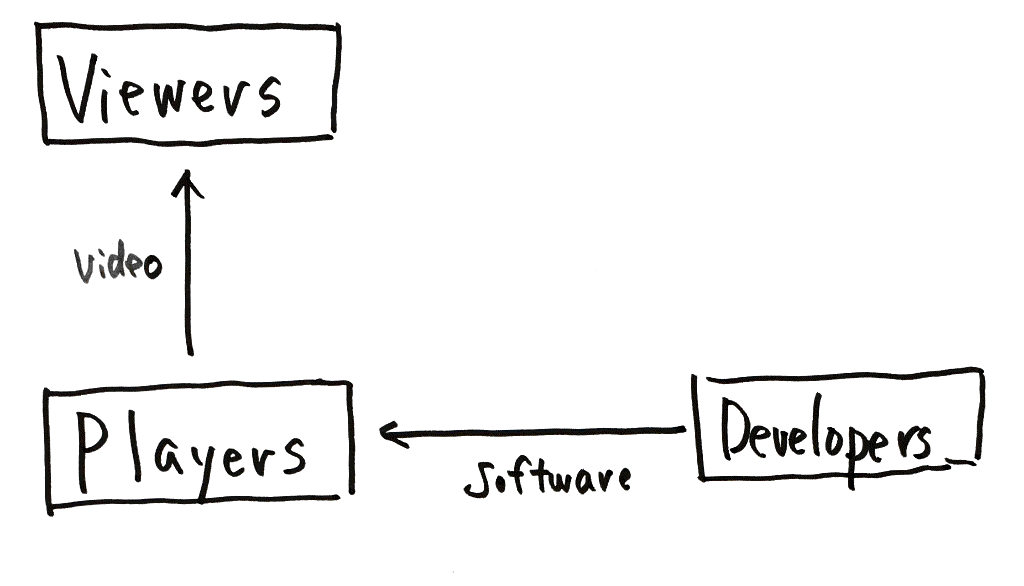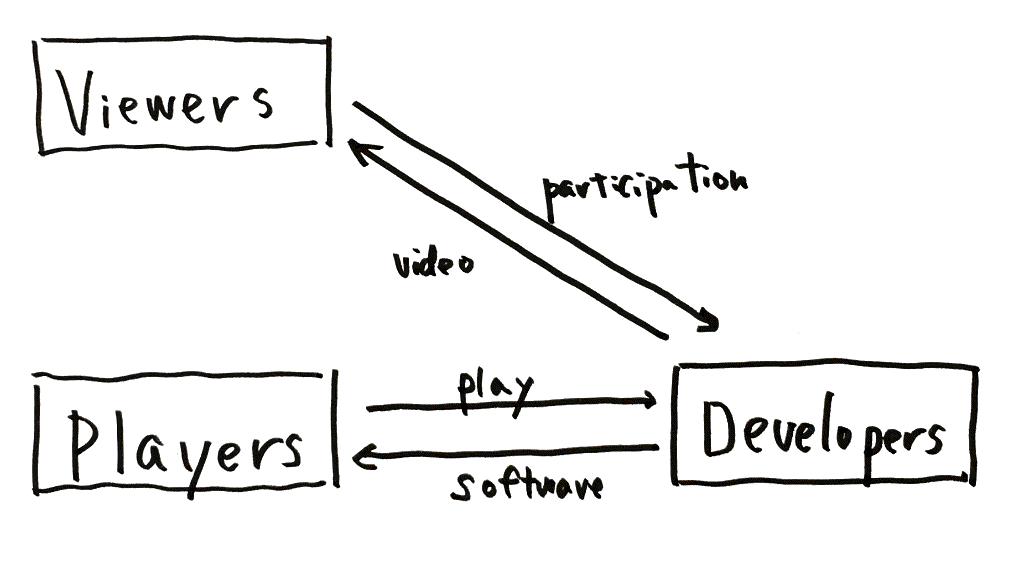During the pandemic, I started playing The Legend of Zelda: Breath of the Wild for the third time, only this time it was for my daughters to watch. They can not fight enemies or solve puzzles, but love watching me battle, ordering me to go here and there and laugh when I fail (many times, of course).
Game viewing is an essential part of gaming
Watching others play right next to you is as entertaining as playing by yourself. Like sports, the outcome is unpredictable every time. Like watching your friends or kids play sports, the experience is intimate.
Online video sharing has expanded game viewing to strangers. There are videos for almost every aspect of gaming, such as tutorials, walkthroughs and clear time attacks. Communication expanded to strangers with same interests all over the world.
Cloud gaming will enrich game viewing further. It enables developers to provide gameplays and game viewing at the same time. It also lets developers deliver these experiences directly, possibly disrupting online video sharing platforms such as Youtube and Twitch.

Developers cannot directly interact with viewers
Currently online game viewing is divided into two parts: developers providing games, and YouTubers (via game viewing platforms) providing game play videos. Developers and viewers are connected but only indirectly, as the diagram below shows.

This has created huge revenue for both YouTubers and online video sharing platforms, since they control the content creation and distribution. From developers’ standpoint though, they can only watch YouTubers and viewers interact with videos generated by their own games.
Cloud gaming enables streaming the game and gameplay videos simultaneously
Cloud gaming will cause a structural shift in how game play videos are provided, and how they are watched. As illustrated in the diagram below, developers will have the opportunity to stream directly to viewers.

With this shift, developers can provide viewing experiences tailored towards their games. This may also provoke new business models, because viewers will access developers directly instead of watching Youtube or Twitch.
Customizing viewers’ screen
There are, broadly, three ways to create unique viewing experiences. One is to personalize the screen for viewers. Today, viewers watch the same screen as the players. But with cloud gaming, viewers can watch customized screens while players play with their own screens.
Customized screens for viewers will differ by the type of games. For instance, viewers may see an overall view while players battle with first person view. They may see additional information such as dark vision which players cannot see. They can communicate with each other with screens suitable for communication, which players may not need.
Either physically or digitally, we have always watched game plays from behind the players. But now there are chances to watch game plays from different angles and much much closer. Am I the only one who sees opportunities?
Customizing viewers’ communication.
The second way to develop unique viewing experiences, is to design a communication system suitable for the game. A shooter game and a puzzle game obviously requires different kinds of communication. But YouTube and Twich provides only a fraction of what can be exchanged among viewers, because they need to support various titles through unified communication systems.
For example, games like Animal Crossing might work with text, sound and images for viewers to comment and advise each other. For FIFA, text and video works better for viewers to clip goal scenes and discuss with each other.
Communication has always been at the core of gaming experiences, and cloud gaming will add another dimension to it. Developers can provide communication tools customized for their games, without depending on social platforms. This can bring huge revenue to developers and publishers.
Viewers’ participation.
The third way to create different viewing experiences is viewer participation. A brilliant example was Stadia’s Crowd play, where viewers of a particular live stream could participate in the game being played.
The demo featured a viewer joining a live NBA 2K stream as one of the players. But viewers do not necessarily have to play the same way as the YouTuber. For example, viewers can create maps and allocate enemies for RPGs. They can create stages for puzzles. They can be the judge or scorer for a sports game. These are all familiar, but combining these in one place and providing them in real time, is one of the core value of cloud gaming.
Cloud gaming business models can monetize from viewers
As I am halfway through playing Zelda, my daughters are beginning to grab my controller. They are still scared of battles, but started playing the easy parts like cooking, hunting and exploring towns. Well, I guess everybody likes to take control!
With cloud gaming, developers can create unique game viewing experiences. This leads to new business models, as generating revenue from not only gamers but viewers, become possible. It will change the power balance between developers, YouTubers and online video sharing platforms as we see today.
This is not to say that online video sharing platforms will lose ground. Rather, they are likely to remain as the destination for many titles’ game viewing. But viewers will have more options, and it is up to the developers to capture this opportunity.
As always, you are welcome to comment via Twitter. Thank you for reading!